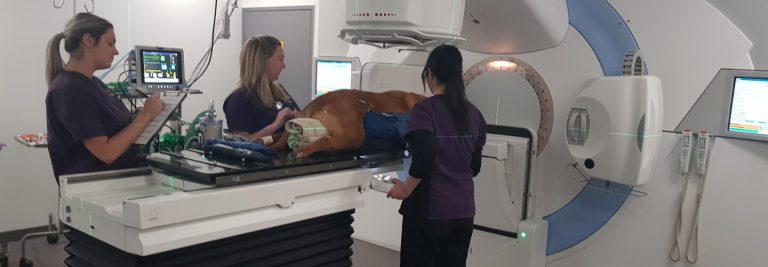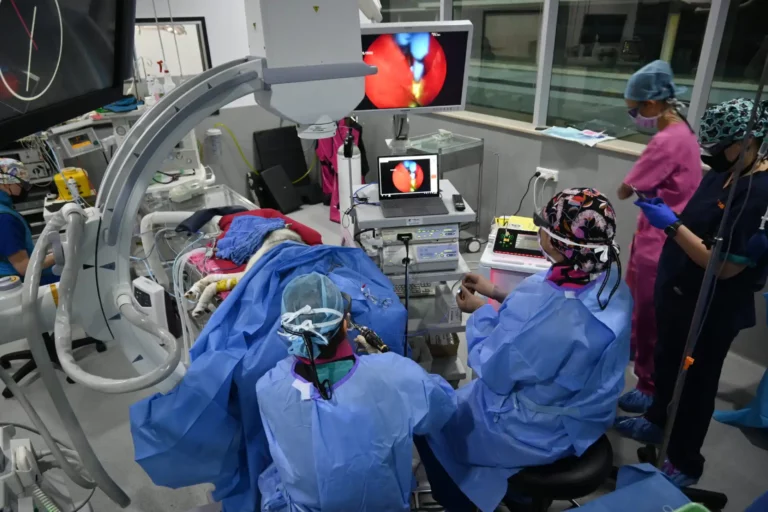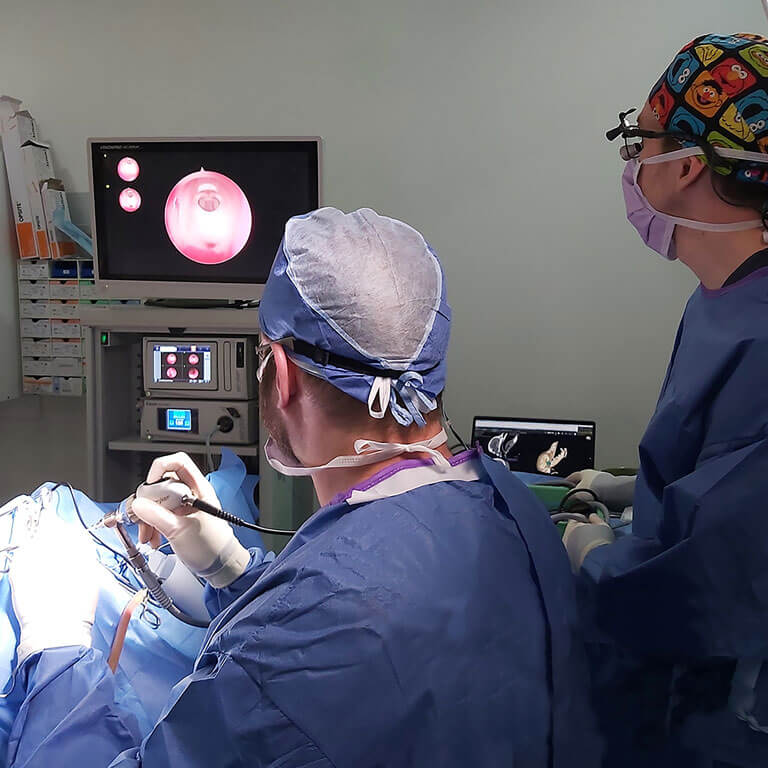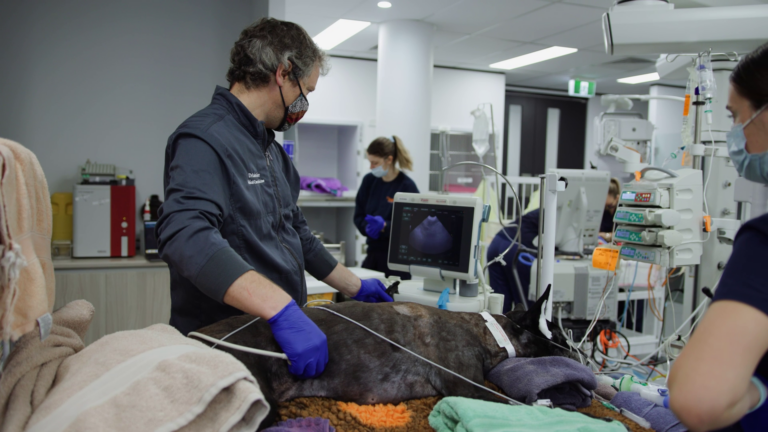Reviewed by Dr Vaughan Moore
Total hip replacements in dogs (or THRs) are a complex surgery requiring the consideration of multiple factors. This article will answer some of the most commonly asked questions about total hip replacement in dogs. Similar considerations also apply to cats.
The most common objective of a total hip replacement in dogs is to treat pain caused by hip dysplasia. Over time, dogs with hip dysplasia will develop arthritis, causing lameness, loss of mobility, and reduced quality of life. Arthritis can also develop from other causes, such as trauma and fractures.
Other indications for total hip replacement in dogs can be to treat recurrent dislocations (luxation), fractures, developmental disorders (avascular necrosis) and failed previous corrective procedures to correct the dysplasia (e.g. femoral head osteotomy).
What is a total hip replacement in dogs?
Total hip replacement in dogs is a procedure where the entire arthritic hip joint is replaced with a prosthesis, including the stem (within the femur), ball (femoral head) and socket (acetabulum).
There are different types of implants that can be used for your pet and vary in composition. Modern materials include titanium alloy for the stem, ball and socket and high density polyethylene as the weight bearing surface of the socket. The objective is select the implant that provides best fit for each individual pet to restore normal anatomy allowing for a comfortable, pain free joint.
How do I know if a total hip replacement is right for my dog?
If painful hips are affecting your dog’s comfort and movement despite non-surgical therapy, total hip replacement may be considered. Stiffness, lameness and reluctance to exercise are often signs of problems. A consultation with a SASH surgeon is the best way to determine if your pet is eligible for a total hip replacement.
What can I expect from total hip replacement in dogs?
The goal of a total hip replacement in dogs is to return your pet to a pain-free, normal hip function. Generally, pets are much more comfortable after the surgery and do not have the “ups and downs” of pain associated with long term medical therapy. They have an improved quality of life. Many owners report that their pet can do things they have not done since they were young. Increase in muscle mass, improved hip motion, and increased activity levels are seen in most patients. Working dogs have returned to full activity. Some ‘mean’ dogs have even developed a pleasant personality when the pain was eliminated from their hips.
What is the success rate of total hip replacement in dogs?
Over 90% of dogs have good to excellent function following Biomedtrix THR, which is the most proven system for dog and cat hip replacements world-wide. The SASH team are among the country’s leading and most experienced experts in of Biomedtrix total hip replacements, having performed hundreds over the years.
What happens when my dog is admitted for total hip replacement?
Your pet must be carefully screened before total hip replacement surgery. This entails a complete history and physical examination. Planning radiographs (X-rays) of the hips will be taken prior to the surgery date. A blood test will be taken to look for evidence of infection, aenemia or problems with internal organs. Your pet’s skin will be carefully examined for signs of infection.
What are the risks of total hip replacement in dogs?
Although the risk of complications are low, as with any surgery, there are always some risks associated with total hip replacements in dogs. These complications include dislocations, fractures of the femur, infections, loosening of the implants, and nerve damage. Although unlikely, risks must be taken seriously as they are critically important when they do occur. Thankfully, most complications can now be successfully resolved, preserving the implants. In the unlikely event your pet does have a complication it is essential to have it dealt with by a surgeon familiar with the total hip replacement technique. This highlights the importance of carefully selecting an experienced team to perform the procedure.
How do I care for my dog after a total hip replacement?
Correct post-operative care is critical to the success of this procedure. The bone will grow into the implants over the first 4-6 weeks and strict confinement is required for every hip replacement pet during this time to avoid the implant slippage or dislocating.
We strongly advise using a crate or pen to ensure that activity can be adequately controlled. The dog should be accustomed to being crated before being taken to surgery.
The first post-operative check is ten to fourteen days after surgery. This should be done by one of the SASH surgeons, as early identification of any problems allows interventions to be performed in a timely manner to maximise positive long term outcome.
For the first month after surgery your dog should only be allowed outside, on a leash, to urinate and defecate and for a short walk. They should be immediately returned to the house afterwards. Inside the house your pet should avoid stairs and slippery floors. Absolutely no running, jumping or playing is allowed in the first two months after surgery.
Will both hips need to be replaced?
80% of the patients with arthritis in both hips only require one side be operated upon to return them to a satisfactory and comfortable life. However, the decision on how many hips or which hip to replace is based on the owner’s observations, the physical examination findings, and the hip X-rays. Your knowledge of your pet’s disability is important in making this decision.
Are there any alternatives to total hip replacements in dogs?
Alternatives to total hip replacements in dogs include conservative (non-surgical) management through the SASH Sports Medicine & Rehabilitation department and other surgical options. The treatment selected will depend on many factors and will be taken into consideration by a SASH surgeon.
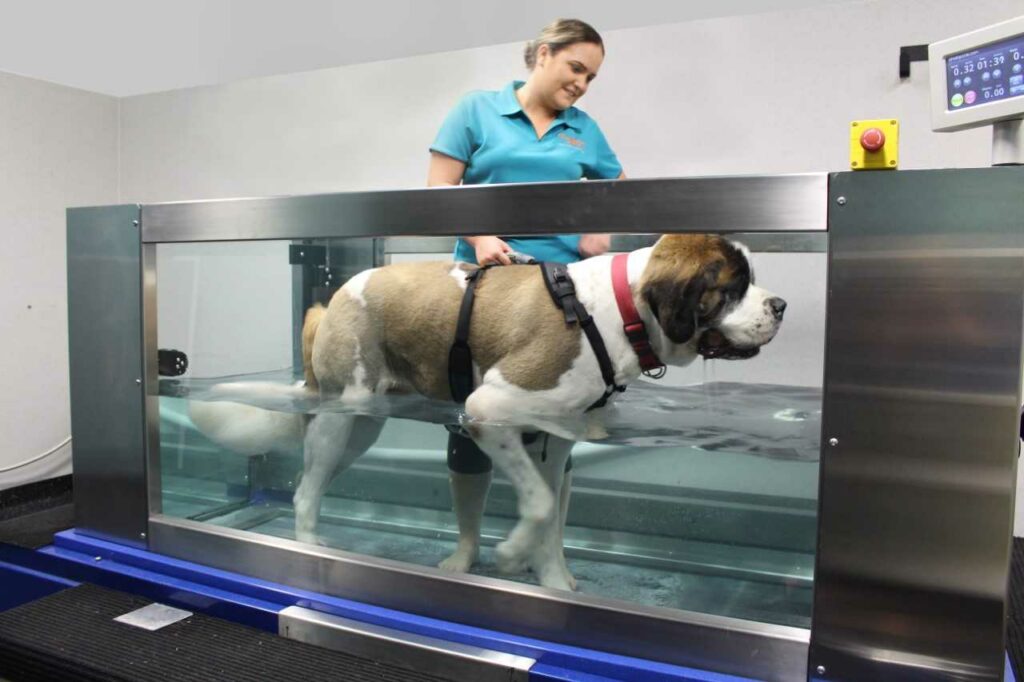
Other surgical procedures, such as femoral head and neck ostectomy, can limit the capacity to perform a total hip replacement if performed prior, so it is important to carefully consider total hip replacement prior to other surgical options.
Why choose SASH for total hip replacement in dogs?
SASH is one of the country’s leading specialist veterinary hospitals. Its multidisciplinary team consists of Specialists in Surgery that excel at performing total hip replacements in dogs. SASH is also one of the few multidisciplinary institutions which offer all of the following services for surgery patients:
- Specialists in Anaesthesia to oversee general anaesthesia to significantly reduce its risk and assist with pain management during surgery and in the recovery period
- Specialists in Diagnostic Imaging to acquire and interpret CT scans and X-rays with in-house equipment and rapid reporting
- 24/7 veterinary and nursing oversight for recovering patients, including from Specialists in Critical Care if required
- Sports Medicine & Rehabilitation Specialists, Vets & Therapists to improve recovery and surgery outcomes
How much does a total hip replacement in dogs cost?
Following determination of appropriate candidacy, a total hip replacement at SASH will include:
- Surgery performed by a trained Specialist Surgeon. SASH’s total hip team of surgeons and assistants are highly experienced in total hip replacement surgery with a proven track record of excellent patient outcomes.
- Prosthesis (implants)
- Diagnostic Imaging including fluoroscopy (live X-ray) and immediate post-operative radiographs (X-rays)
- Advanced anaesthesia and pain relief (including nerve block) overseen and performed by a Specialist Anaesthetist
- Post-operative nursing and veterinary care, including an assessment with our Sports Medicine & Rehabilitation team and in-hospital physiotherapy
To obtain an accurate cost estimate, you will need a consult with a SASH veterinarian. However, if contact us below, we can do our best to provide you with as much information as possible prior to your appointment.
If your dog has been diagnosed with hip dysplasia or you suspect it may have painful hips, click the contact link below to book an appointment with the SASH Surgery team.
